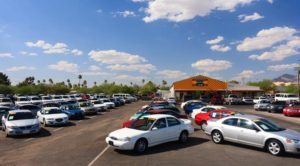 When you get the renewal for your auto insurance policy does it sound like foreign language?
When you get the renewal for your auto insurance policy does it sound like foreign language?
If so, you are not alone. As a personal lines insurance agent I can vouch for the fact that many people have no idea what their auto coverage’s mean.
It is extremely important to know and understand what coverage’s you do and don’t have. Without the proper knowledge you could be dangerously underinsured.
If you have trouble decoding your auto insurance policy let’s take a look at some of the most common auto insurance coverage’s.
Auto Insurance Basics
Most auto policies have numbers listed like this 100/300/100. These are your liability limits and would come into play if you were in an at-fault accident. Remember liability insurance does not cover you. It protects you financially by covering the other people in an auto accident caused by you, up to your liability limits.
The first number is the amount your insurance would pay in bodily injury per person. In this example it would be $100,000.
The second number is the amount your insurance would pay in bodily injury per accident. In this example it is $300,000.
The third number is the amount your insurance would pay in property damage to others. In this example it would be $100,000.
Other common and highly important coverage’s include Uninsured Motorist Coverage (UIM) and Underinsured Motorists Coverage (UM). These two coverage’s would come into play if you or your car was hit by someone who didn’t have insurance or didn’t have enough insurance to cover your bodily injury claim. As long as you have these coverage’s on your policy you will be protected from irresponsible drivers. These are typically very inexpensive coverage’s to have.
Uninsured Property Damage (UMPD) -You would add this to any vehicles in which you did not carry full coverage on. Just like UIM and UM, UMPD would pick up the tab for damage done to your vehicle if the person who hit you was uninsured or underinsured.
Comprehensive or Other than Collision Coverage – This coverage protects your car from any accidents that are other than collision. For example, if hail damaged your car or if you hit a deer, the insurance company would pay for your vehicle to get fixed minus your deductible.
Collision – Collision insurance covers you if you were in an at-fault accident and caused damage to your vehicle. The insurance company would pay for any damage done to your vehicle minus your deductible. Comprehensive and Collision combined are considered “full coverage”
Rental Car- In the event that you were involved in an at-fault accident and your vehicle was temporarily not drivable, rental car coverage would come into place. On your insurance policy rental car limits will often look like this 30/900. The first number is the amount of coverage you have per day. The second number is total amount allowed for a 30 day period.
Towing and Labor- There is often a certain amount assigned to this coverage. In the event you were involved in an at fault accident, this would provide towing coverage up to the limit stated on your policy.
These are some of the basics that you should understand about your auto insurance policy. If there are any other coverage’s on your policy that you do not understand you need to call your insurance agent.
Understanding Your Deductible
You are free to choose your own deductible unless you have a loan or lease agreement on your vehicle and the finance company gives you a maximum deductible limit. Deductibles apply to comprehensive, collision, and sometimes uninsured property damage coverage.
Deductibles usually range anywhere from $0 – $2500. You will be responsible for paying the deductible portion in the event you need to use your comprehensive or collision insurance. If you are financially comfortable with opting for a higher deducible you can save a lot of money on your premium. However, if having to pay a high deductible would drain you financially, it’s best to opt for a lower one.
A Word Against State Minimum Coverage’s
Everybody is trying to save a buck nowadays and auto insurance is a great place to start. However, it is not a good idea to lower your coverage’s just to save money.
You need to have enough liability coverage to protect your assets. For example, if you caused an auto accident and had $25,000 in bodily injury coverage but the people you hit had $50,000 worth of bodily injury, you stand the chance of being sued.
In this event the most likely scenario is that the other people have uninsured motorist coverage and their insurance company picks up the other $25,000 in bodily injury. But, now what happens?
The insurance company will subrogate against you and you will personally be responsible for the other $25,000.
So, if you are trying to save money on your auto insurance do not automatically go for state minimum coverage. Talk to your agent and decide which liability limits are right for you.
You can then try to save money on your auto policy by checking discounts or getting quoted with other companies.
Bottom line: don’t risk your assets by going with the lowest possible coverage. Protect yourself and seek to understand what coverage’s are on your policy.
If you have any questions leave them in the comment section.

Alexa Mason is a freelance writer and wanna be internet entrepreneur. She is also a newly single mom to two beautiful little girls. She chronicles her journey as a single mom trying to make it big at www.singlemomsincome.com.

We’re shopping for auto insurance as we speak. Since insurance is such a pain to deal with I think we’re going to go pretty high on the deductible side and just keep an extra emergency fund, so we can only worry about making big claims. Good summary, thanks.
That’s a good idea. Insurance is meant to be used for big claims. I am always shocked at the amount of people who file $50 – $100 claims knowing it’s going to make their insurance go up.
Thank you for this, it was easy to read and understand finally. Now I know what I’m really getting and what I need to change 🙂
I am glad it helped you, Crystal!